Special Report
The Smallest and Biggest Bombs in the Russian Military Arsenal
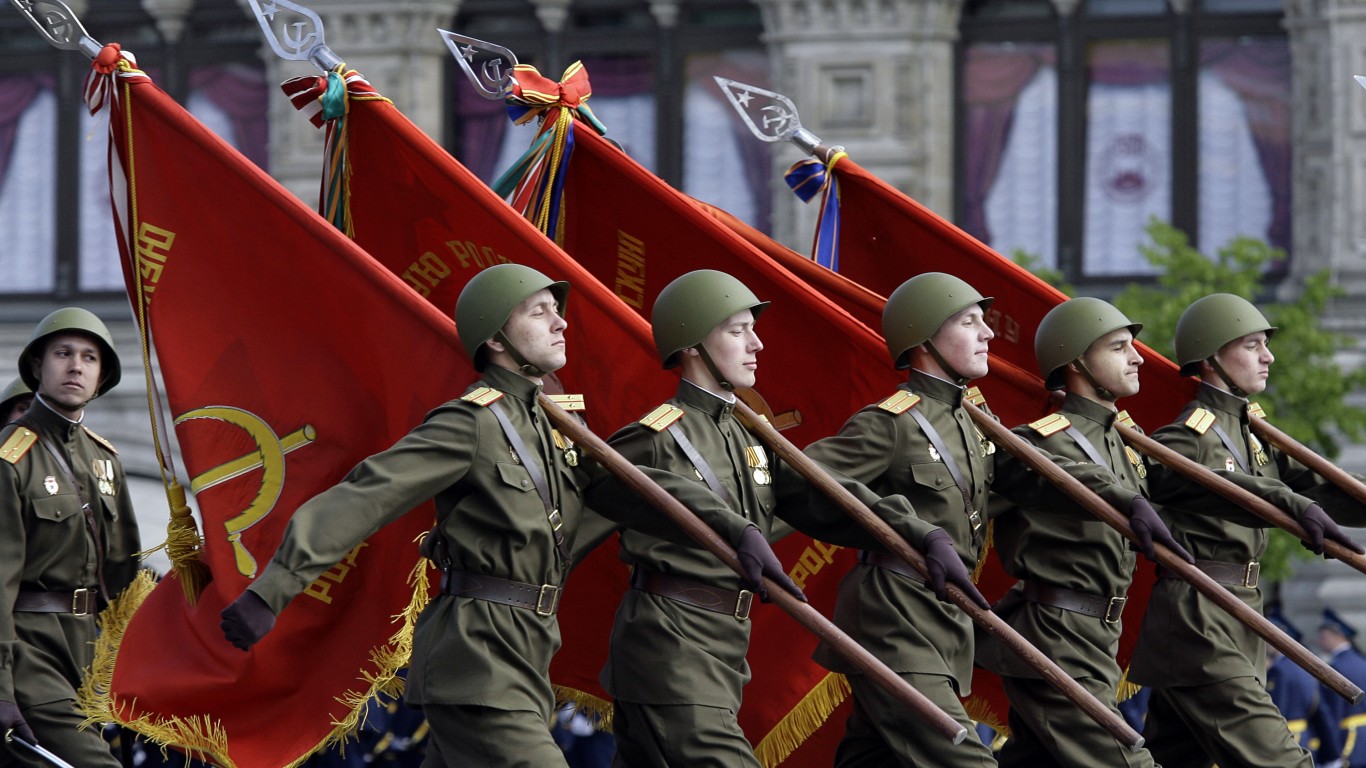
Published:

So far in its war in Ukraine, Russia has employed helicopters, fighter jets, rockets, and bombs among other arms and weapons. (As of early August, here are the latest Russian and Ukrainian weapon and vehicle losses.)
Russia has a wide array of bombs that are used for a variety of purposes. While some might be used for busting bunkers or destroying buildings, others can drop chemicals, cluster munitions, or incendiary charges. Even though the Convention on Cluster Munitions, signed by 112 states, does not permit some of these bombs, many countries’ arsenals include them.
To list the aviation bombs Russia uses, 247 Wall St. reviewed an assessment of such bombs by GlobalSecurity.org, a site that analyzes security issues around the world. Aviation bombs are generally those dropped from aircraft. The weapons listed here are categories of bombs, ranked by weight of the heaviest bomb in each class. To find details on the bombs we relied heavily on the site Collective Awareness to Unexploded Ordnance (CAT-UXO).
Russia’s bombs include incendiary, chemical, and precision-guided armaments. Not all do physical damage. The country’s leaflet bomb, also known as AGITAB-500-300, drops propaganda material as a form of psychological warfare that serves to demoralize, threaten, and disseminate disinformation. (Also see, the 35 guns used by Russian special forces.)
While leaflet bombs are not meant to cause physical harm, practically all other Russian bombs do. One of the biggest bombs within Russia’s arsenal is the aptly named “Father of all bombs” — a vacuum bomb. Also known as a thermobaric weapon, the vacuum bomb sucks oxygen from the air, enabling its fiery blast to last longer than a conventional bomb. It is also capable of vaporizing human bodies. In this case, The Father of All Bombs was meant to rival the U.S. equivalent, “The Mother of All Bombs,”
These are only a couple examples of the bombs in Russia’s arsenal. Here is a look at the biggest bombs that Russia uses.
Click here to see the smallest and biggest bombs in the Russian military arsenal.

27. AOKH-10
> Type: Chemical
> Weight: 10 kg
The Russian AOKh-10, also called AOX-10, is a chemical bomb that explodes into many pieces when dropped from an aircraft. It was created before World War II. It is designed to be dropped from the air and falls freely while using its fins to stay on track. This bomb is effective against groups of soldiers, vehicles, and tanks. It has a thin metal shell, a long tube filled with explosives, steel pieces, and harmful chemicals.
[in-text-ad]
26. SURF 16X
> Type: Priboy [Surf] aircraft missiles
> Weight: 100 kg
The SURF 16X was developed in the late 1940s to early 1950s and helped set the stage for Russia’s continued modernization of its missile systems. These early years marked a significant phase in introducing air-to-air and air-to-surface missile technologies.
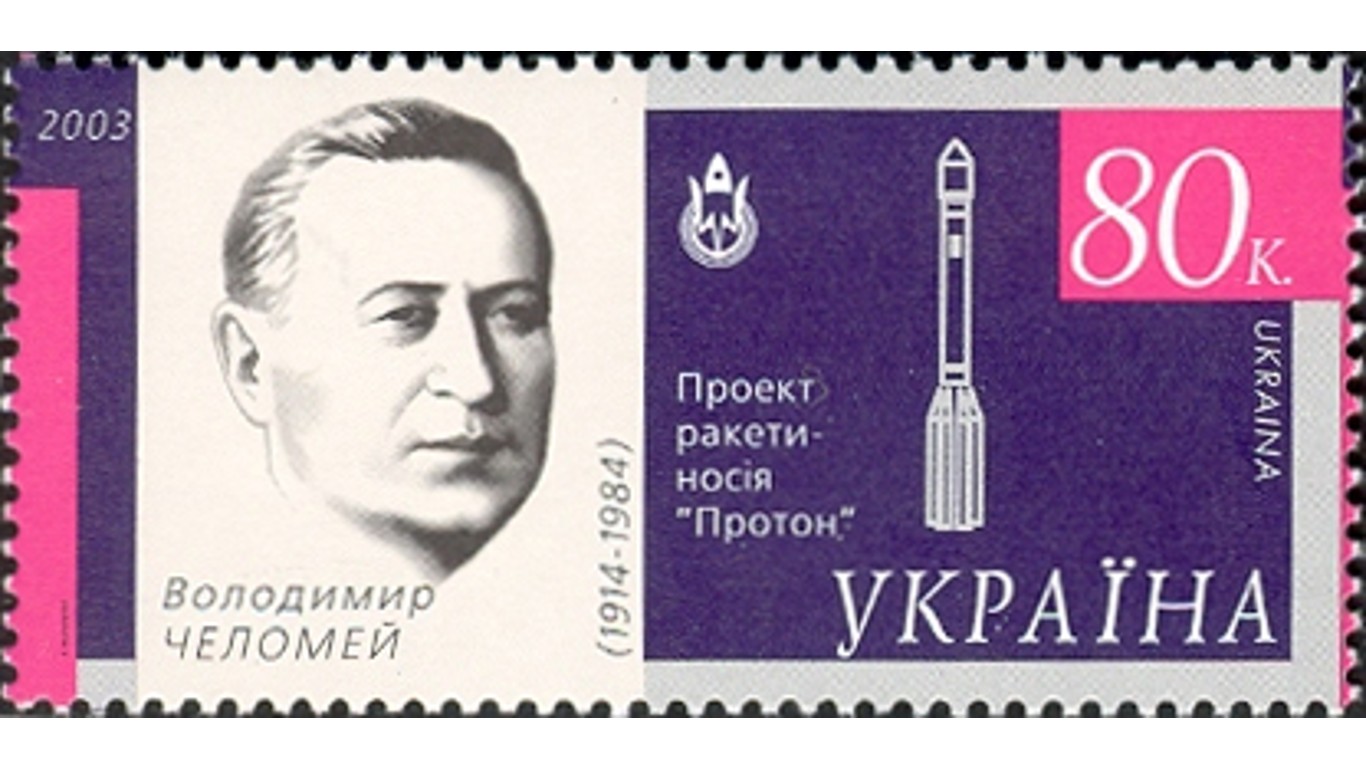
25. v14X
> Type: Chelomei aircraft missiles
> Weight: 100 kg
This type of missile was named after Vladimir Chelomei, a prominent Soviet rocket engineer, who led the design and development of many advanced missiles and space vehicles. He also spearheaded the development of the Proton rocket, initially intended as an intercontinental ballistic missile, but later repurposed for launching spacecraft and satellites.
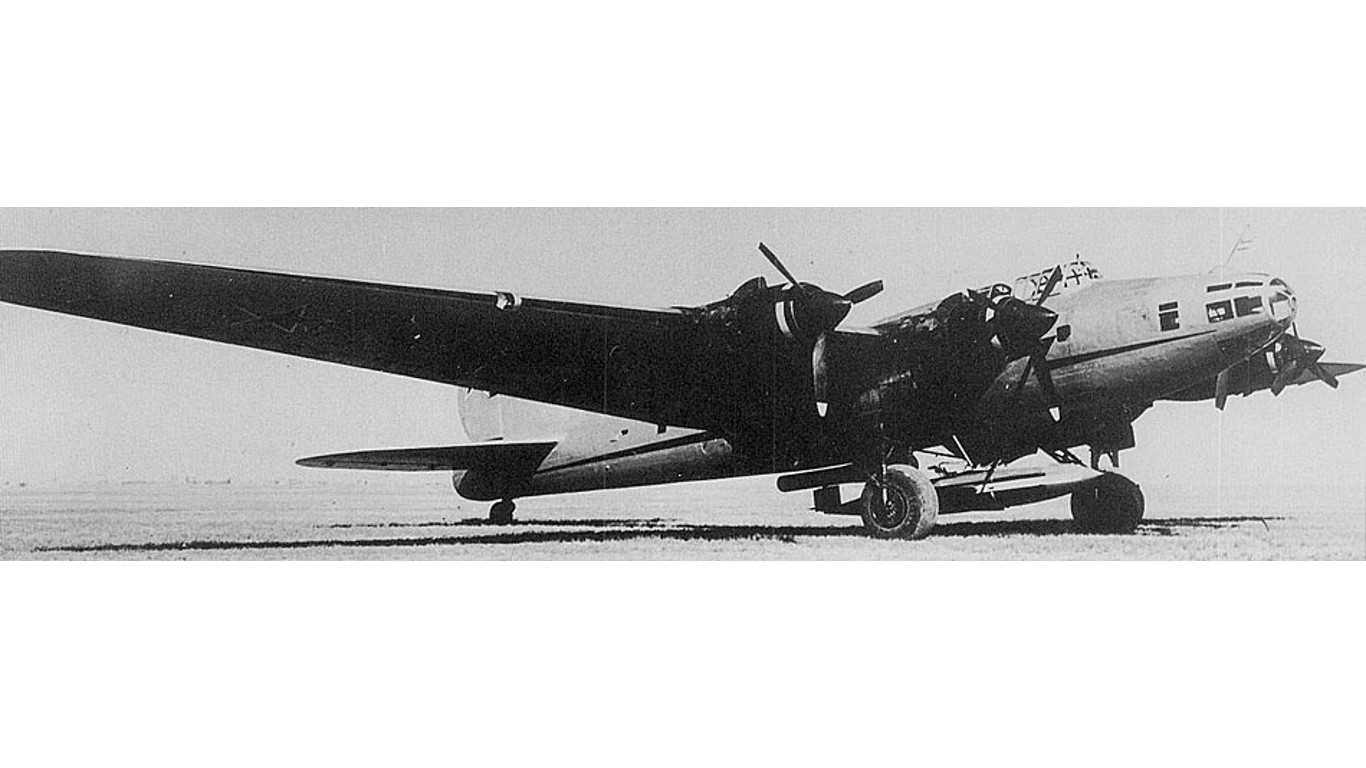
24. 10X
> Type: V-1 buzzbomb analog aircraft missile
> Weight: 100 kg
The 10X is an early iteration of the cruise missile developed during World War II by the Soviet Union based on the design of the German V-1 flying bomb. The 10X is powered by a pulsejet engine, and was intended as an unmanned aerial vehicle designed for one-way missions — the entire aircraft serving as a missile. While this was not operational during WWII, it was eventually replaced by more advanced designs in the post-war period.
[in-text-ad-2]
23. AO-50/100
> Type: Frag
> Weight: 100 kg
The AO-50/100 is a fragmentation aircraft bomb, characterized by its high-explosive nature and free-fall, fin-stabilized design. Notably, it features a cylindrical body, an ogival nose, and a tapered rear section, in addition to box fins and a single suspension band. It is easily identifiable by its gray painted body, accompanied by a green band around the nose and a blue band on the body.
22. Zagon-1
> Type: Anti-submarine bomb
> Weight: 120 kg
The Zagon-1 S3V is an anti-submarine air bomb engineered to target submarines at sea level, during periscope use, and at depths up to 600 meters. It features unique capabilities for deployment in water areas at least 150 meters deep. It operates by descending on a parachute released upon splash-down. It then uses active sonar for target location and a motion control system for steering, offering a cost-effective, yet robust solution with superior combat effectiveness compared to traditional anti-submarine bombs.
[in-text-ad]
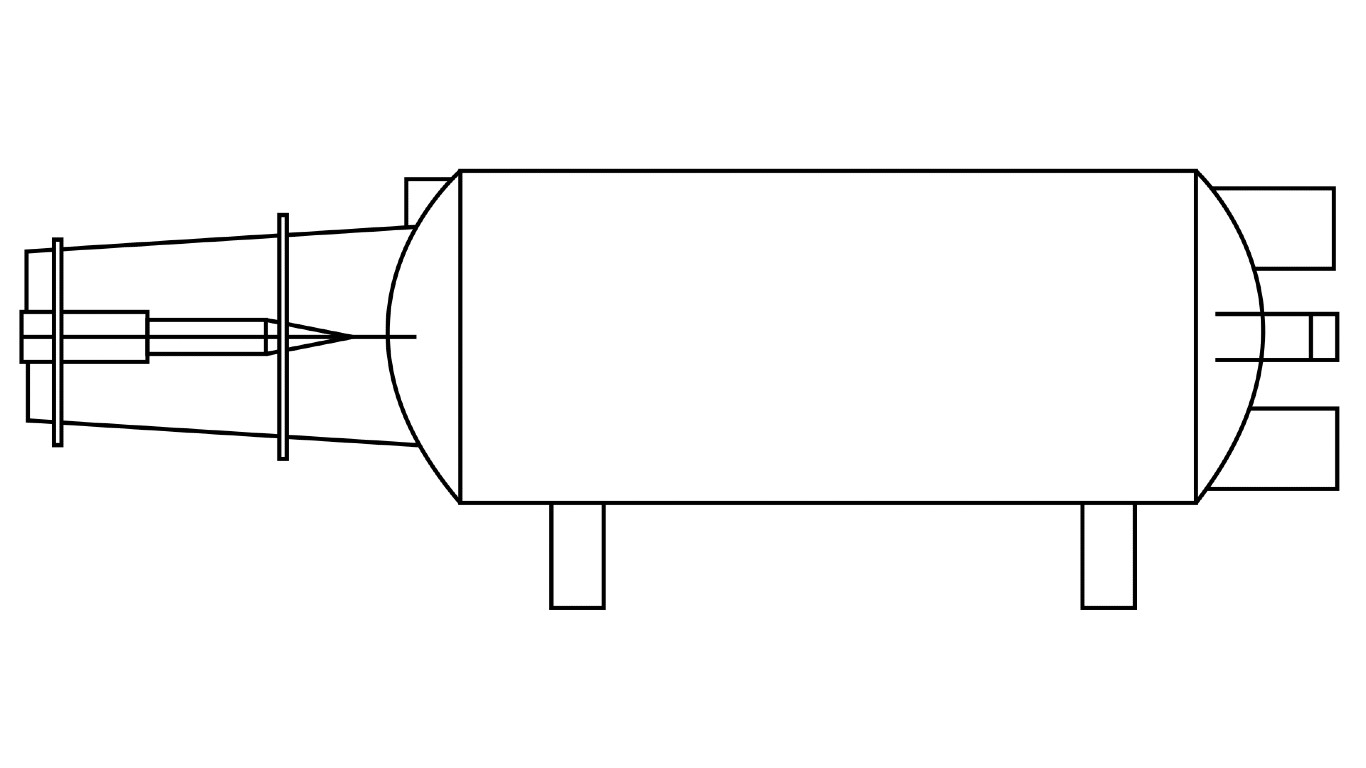
21. FOTAB
> Type: Photoflash
> Weight: 100 kg – 250 kg
The FOTAB is an aerial bomb that is engineered with a thin casing to generate a swift and intense flash of light, serving as a tool for nighttime aerial photography by illuminating the landscape below. These devices specifically support nighttime bombing missions by providing illumination of the target area. They have a burn duration ranging from 2.2 to 3.5 minutes with a brightness level between 22,000 and 700,000 candlepower. Unlike typical photoflash bombs, the FOTAB exclusively employs nose fuses, with the typical detonator replaced by an ignition charge to trigger the flare.

20. SAB-250-200
> Type: Illumination
> Weight: 250 kg
The SAB is an aircraft bomb with a unique flat-nosed, cylindrical design, including the tail, and four slender fins at the back. This device, notable for its thin shell about 5 mm in thickness, is engineered to deploy seven parachute flares for the purpose of nighttime target illumination. The bomb’s functionality is such that a minor low explosive ejection charge located beneath the fuze is responsible for both the ignition and ejection of flares, achieved by blowing off the flat base plate at the rear.
19. KMGU
> Type: Container of small loads
> Weight: 250 kg
The KMGU, an acronym for Unified Container for Small-sized Load in Russian, is a unique submunition dispenser developed in Russia. It is an externally mounted, aircraft-carried device that is both non-releasable and reusable, designed to distribute both anti-personnel and anti-vehicle submunitions or landmines. The upgraded version, KMGU-2, features an aluminum cylindrical body divided into eight segments, each with its own pneumatically operated door. It can be loaded with a variety of submunition cassettes such as AO-2.5RT, PTM-1S, and PFM-1.
[in-text-ad-2]
18. ZAB
> Type: Incendiary
> Weight: 300 kg
The ZAB is an incendiary bomb characterized by its thin casing and specific design intended to cause extensive damage through extreme heat and fire. This bomb’s design includes a cylindrical casing about 5 mm thick, and a high-explosive charge located within a central tube, with a secondary tube containing white phosphorus as an ignition charge.

17. BETAB-500U
> Type: Target penetration runway denial
> Weight: 478 kg
The BETAB-500 is a Russian aircraft bomb known for its impressive penetration capabilities, particularly against fortified structures like bunkers. Its heavy casing, thicker than that of the FAB or OFAB models, varies from 35 mm at its thinnest point near the tail cone to 45 mm closer to the center, which provides the necessary strength for piercing hard targets. Once inside, the high-explosive mechanism triggers a powerful blast and fragmentation effect, facilitated by either a standard or long-delay tail fuse, enhancing its destructive potential.
[in-text-ad]
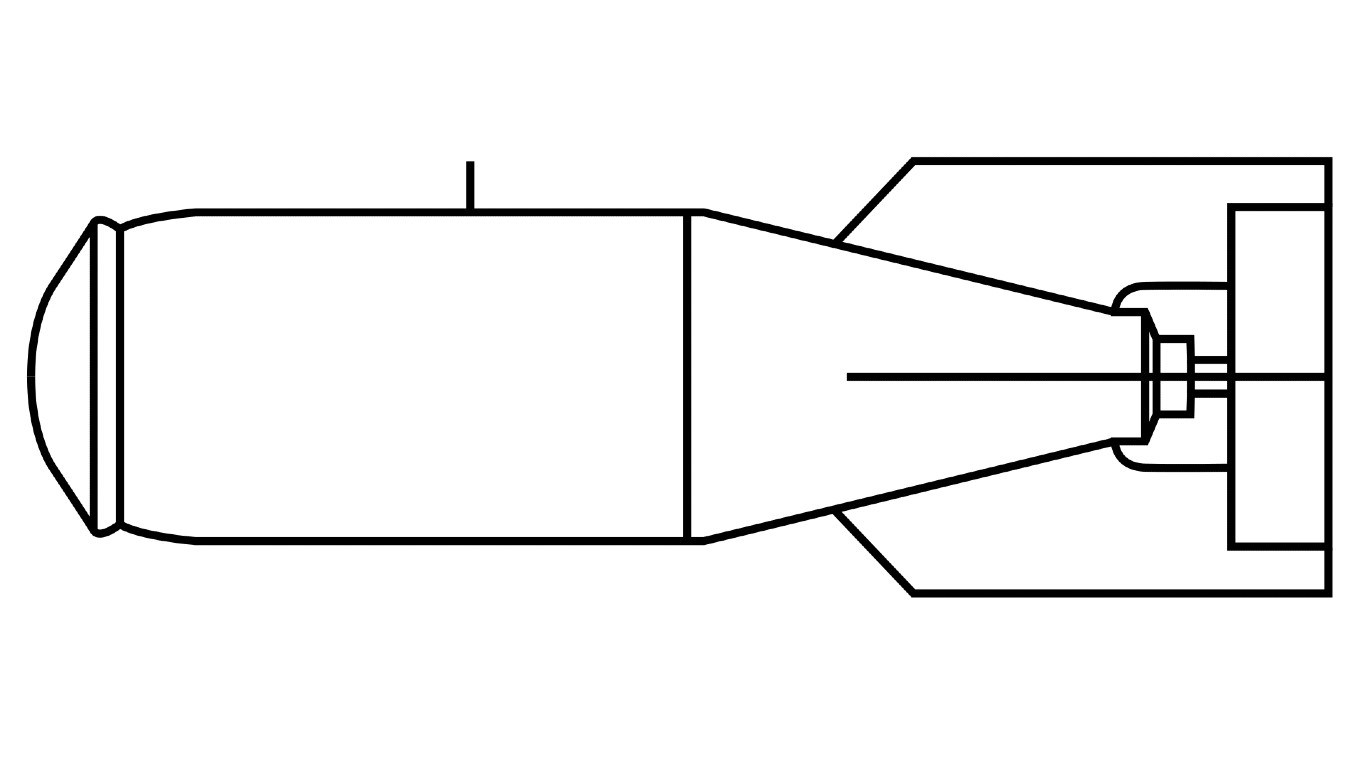
16. OFAB
> Type: Frag, high explosive, thermobaric bomb
> Weight: 100 kg – 500 kg
The OFAB is a high-explosive aircraft bomb characterized by its robust casing and significant blast overpressure. This design enables it to cause extensive damage and inflict casualties at great distances due to casing fragmentation. Unlike the FAB series bombs which have a 10 mm casing at the central parallel section, the OFAB has a thicker casing and a stronger nose section, along with a tail cone that is filled with explosives and is no more than 6 mm thick. The bomb is equipped with two fuse wells for impact and inertia/impact fuzes, one in the nose and one in the tail.
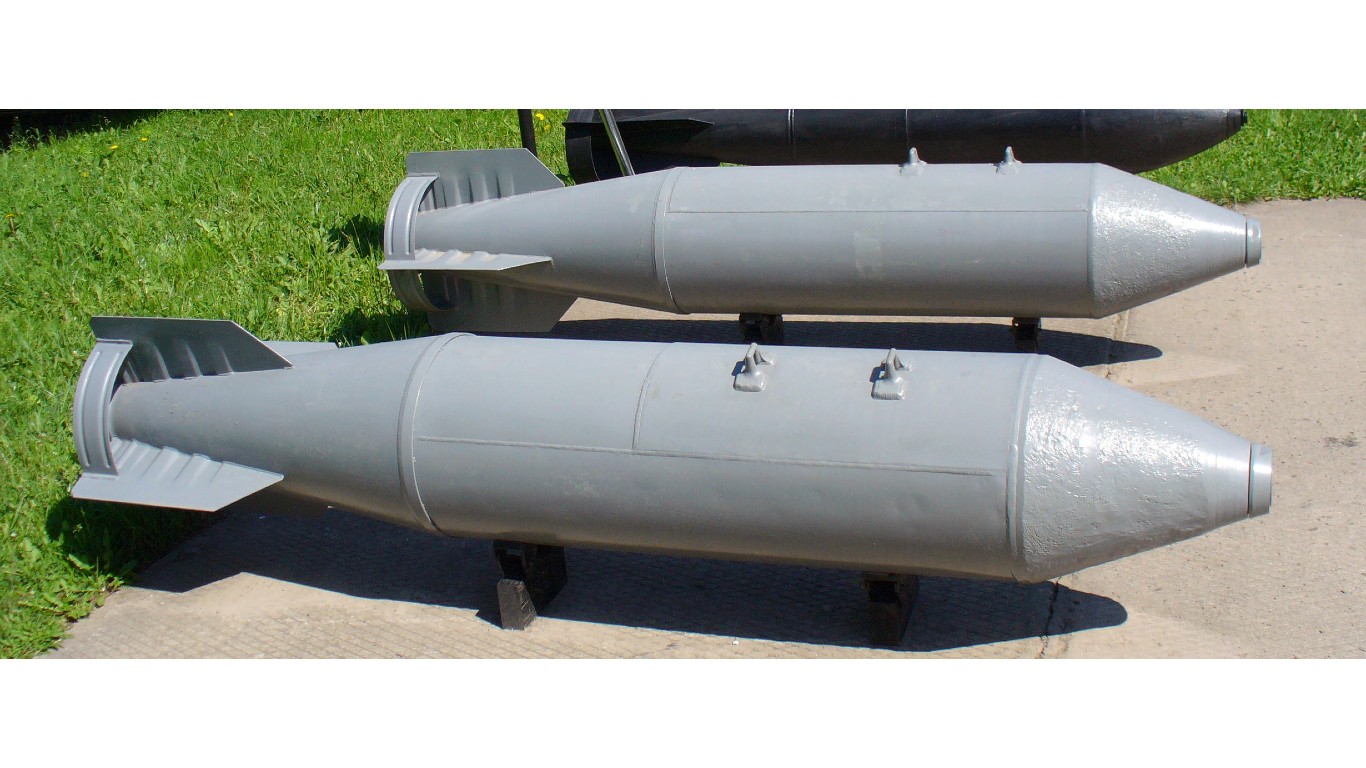
15. AGITAB-500-300
> Type: Leaflet
> Weight: 500 kg
The AGITAB-500-300, hailing from Russia, is an aircraft bomb uniquely designed for non-violent purposes. Its thin casing and tail ejection features enable it to spread propaganda leaflets over a large expanse. This technology is specifically engineered for the dissemination of information, making it a unique tool in the world of propaganda.
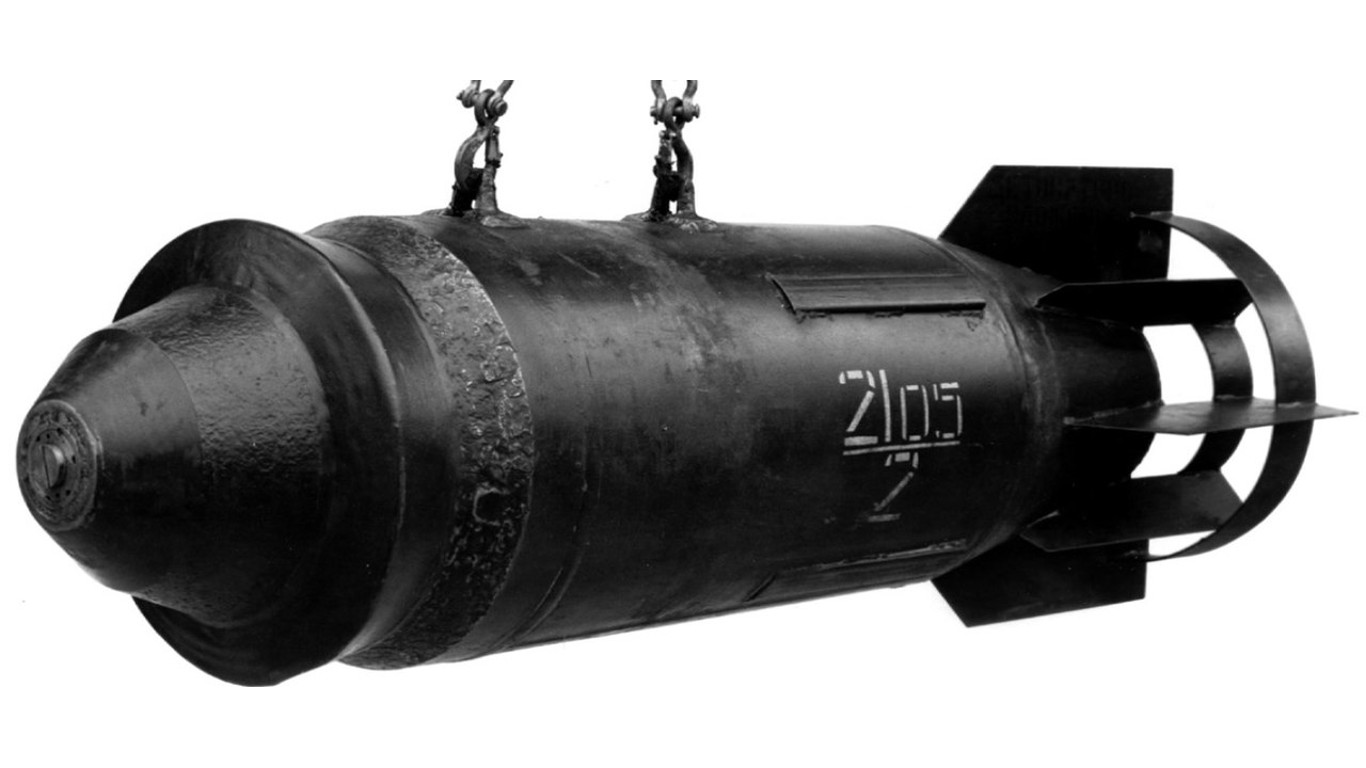
14. FZAB-500
> Type: High explosive incendiary
> Weight: 500 kg
The FZAB-500, a Russian-made incendiary bomb, boasts high-speed, low-level, and low-drag features, making it effective against ground troops, storage facilities, and fuel depots. The name translates to fragmentation/high-explosive incendiary aircraft bomb.
[in-text-ad-2]
13. ODAB-500PM
> Type: Space-bomb [fuel air explosive]
> Weight: 500 kg
The ODAB-500 refers to a set of aerosol bombs. The series name stands for volumetric detonating aerial bomb, with the numerals in the name reflecting the approximate weight of the bomb. This aerial bomb variety utilizes an explosion mechanism similar to dust cloud explosions, a phenomenon observed since the latter half of the 19th century in settings such as mills, textile factories, and mines, and later seen in the 20th century with steam cloud explosions over petroleum products in tanker holds and oil facilities.
12. OFZAB-500
> Type: High explosive incendiary
> Weight: 500 kg
The OFZAB-500, an incendiary bomb designed for high-speed, low-level attacks, is particularly effective against troops, fuel depots, and other vulnerable materials in the field. This bomb resembles a high-explosive device more than an incendiary one.
[in-text-ad]
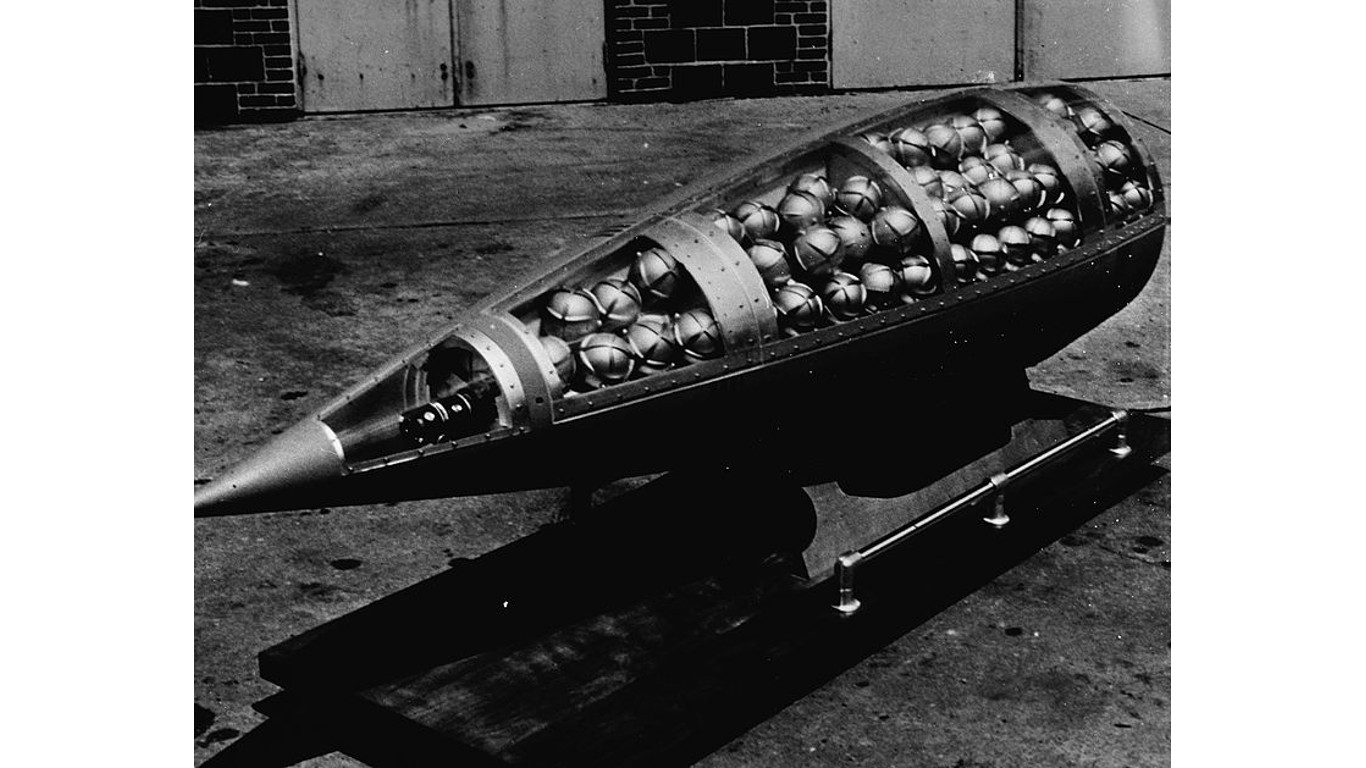
11. RBK
> Type: Cluster bomb, Glonass guided
> Weight: 500 kg
The RBK, an older model from Russia, is a thinly cased cluster bomb engineered for spreading submunitions across a designated zone. It contains a side panel that swings open and allows for the payload of submunitions to be swapped or replenished as needed.
10. SPBE 500-D
> Type: Single cluster bomb submunitions
> Weight: 500 kg
The SPBE, alternatively known as MOTIV-3M or the 9A349, is a high-explosive, infrared heat-seeking, sensor-fused weapon developed in Russia. This cylindrical submunition carries a 5.8 kg shaped-charge and is equipped with an infrared sensor that scans its target area guided by a four-canopy parachute. Once a target is acquired and the detonation point is determined by the onboard microprocessor, the weapon arms itself, triggering the explosively formed projectile.
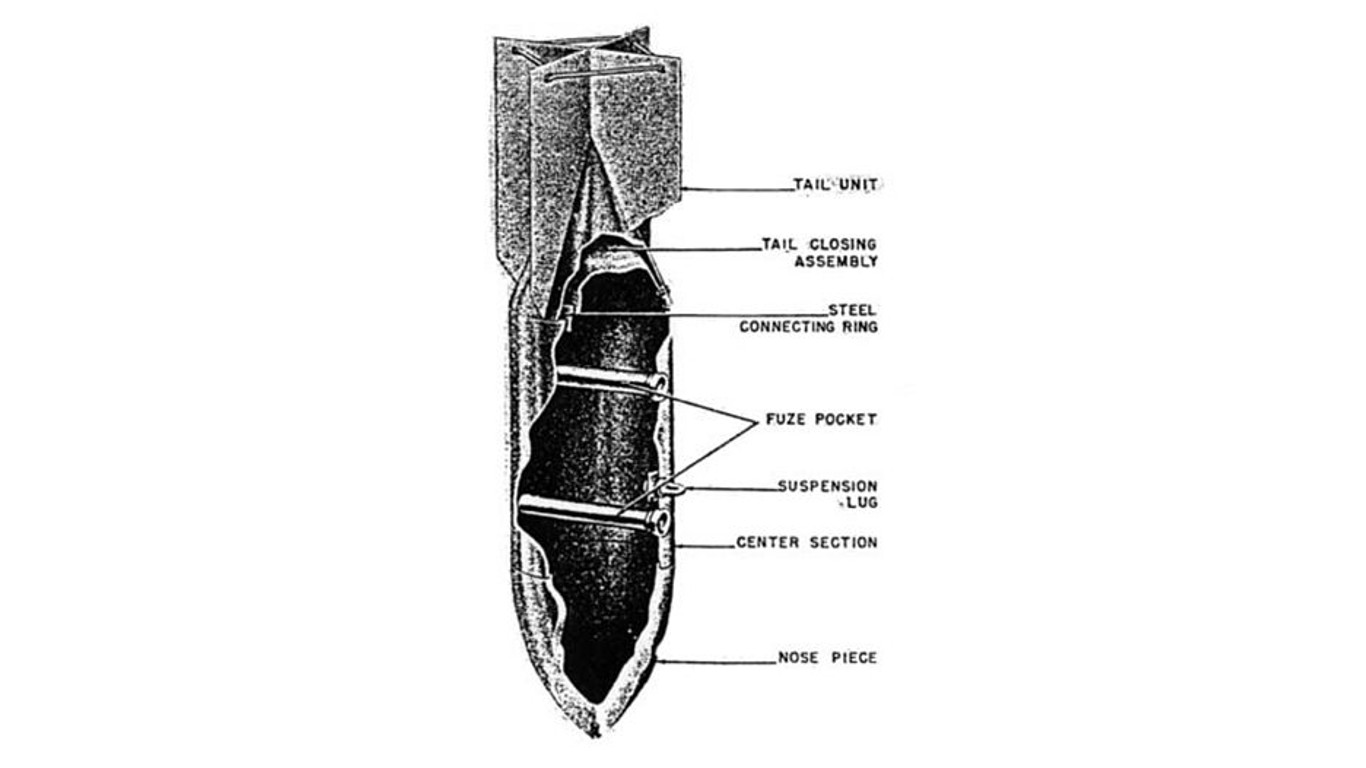
9. ST-500
> Type: Incendiary tank
> Weight: 500 kg
The Russian ST-500 is an incendiary bomb characterized by its thin casing and designed to yield extensive damage via intense heat and fire derived from its incendiary filling. The bomb’s design features a cylindrical form with parallel sides, excluding the tail. It is constructed with a high-explosive charge in the central tube.
[in-text-ad-2]
8. ZB-500SH
> Type: Incendiary
> Weight: 500 kg
The Russian ZB-500 is an incendiary aircraft bomb, featuring a conical nose and tail, two suspension lugs, and a single stabilizing fin, though older versions may possess two or four fins without reinforcement rings. Unlike typical napalm bombs, its design is unique with a smaller body diameter to length ratio and a distinct, small vertical stabilizing fin at the rear. The bomb contains a synthetic substance known as ognesmes, a combination of toluene, kerosene, and polystyrene, instead of napalm.
7. KHAB
> Type: Chemical, nonpersistent/persistent
> Weight: 25kg – 1,000 kg
The KHAB is a Russian aircraft bomb that is designed for air-dropped, free-fall deployment with fin-stabilization. Depending on its intended use, it could be filled with a variety of chemical agents, including hydrogen cyanide, phosgene, or mustard, with the capacity to hold up to 29 kg of thickened soman, a nerve agent. Upon making contact with a target, the fuse triggers a detonation, causing the bomb case to rupture and disperse the chemical contents.
[in-text-ad]
6. BRAB
> Type: Armour piercing
> Weight: 200 kg – 1,000 kg
The BRAB is an armored-piercing, fin-stabilized, aircraft bomb, specifically designed for heavy construction destruction. Its formidable capabilities allow it to penetrate hardened armor plate up to 152 millimeters (6 inches) and reinforced concrete as thick as 1.78 meters (70 inches).
5. KAB
> Type: Corrected bomb, semi-active laser guidance, adjusted air bomb, high explosive, precision-guided bomb
> Weight: 250 kg – 1,500 kg
The Russian KAB is a free-fall bomb known for its high-explosive features and a nose-mounted television guidance system. This Correctable Aircraft Bomb is equipped with control surfaces at its rear and was designed by the Soviet Air Force during the 1980s. Recognizable by its cylindrical shape, four stabilizing fins, and a glass hemispherical nose, the bomb also features a command data link antenna strake along its bottom.
4. UPAB-1500
> Type: Precision-guided bomb
> Weight: 1,500 kg
The UPAB-1500B, recognized as the K029ÐÐ in Russia, is an advanced aircraft bomb equipped with concrete-piercing, high-explosive capabilities and designed specifically for the destruction of military infrastructure. This extended-range weapon features a combination of inertial and satellite guidance, along with a sophisticated fuse providing three delayed detonation modes in its high-explosive warhead.
[in-text-ad-2]
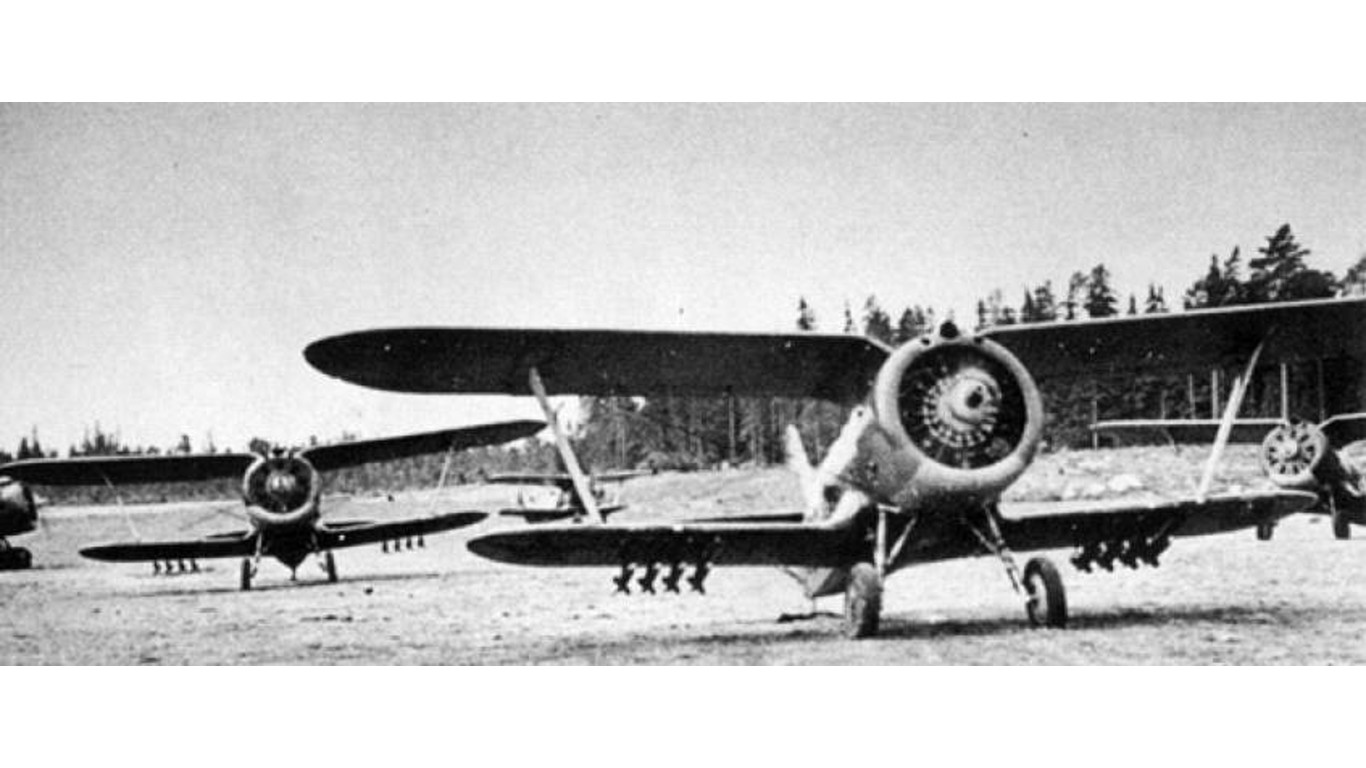
3. UB
> Type: Chaika radio-controlled
> Weight: 2,000 kg – 5,000 kg
The UB or Chaika (Seagull) was a radio-controlled missile developed by the Soviet Union in the 1950s. It was an experimental anti-ship cruise missile based on captured German technology from WWII.

2. AVBPM
> Type: “Father of All Bombs” [vacuum bomb]
> Weight: 7,100 kg
In 2007, Russia conducted a high-power bomb test, known by its codename Aviation Vacuum High-Power Bomb, a test that hinged on harnessing the impact of a vacuum explosion’s volume. The AVBPM, which contained roughly 7 tons of high explosives, was reported as being four times more potent than the United States’ equivalent the Mother of All Bombs, which holds over 8 tons of explosives, due to the novel explosive it used, a product of nanotechnology. The AVBPM’s explosive power was equivalent to 44 tons of TNT, a capacity previously unattained by the military, and significantly greater than the American GBU-43 bomb, despite its smaller size, a feat made possible by the classified composition of the new explosive.
[in-text-ad]
1. FAB
> Type: High explosive, general purpose
> Weight: 250 kg – 9,000 kg
The FAB is an aerial demolition bomb designed with a high-explosive, general-purpose, and fin-stabilized structure. The bomb’s structure comprises a heavy, cast steel nose section, a cylindrical middle section, and a conical rear section that are all welded together, with nose and tail fuse adapters threaded into the body. The bomb’s size category is indicated by the numbers following its designation letters, and it typically employs TNT as its main charge.
The average American spends $17,274 on debit cards a year, and it’s a HUGE mistake. First, debit cards don’t have the same fraud protections as credit cards. Once your money is gone, it’s gone. But more importantly you can actually get something back from this spending every time you swipe.
Issuers are handing out wild bonuses right now. With some you can earn up to 5% back on every purchase. That’s like getting a 5% discount on everything you buy!
Our top pick is kind of hard to imagine. Not only does it pay up to 5% back, it also includes a $200 cash back reward in the first six months, a 0% intro APR, and…. $0 annual fee. It’s quite literally free money for any one that uses a card regularly. Click here to learn more!
Flywheel Publishing has partnered with CardRatings to provide coverage of credit card products. Flywheel Publishing and CardRatings may receive a commission from card issuers.
Thank you for reading! Have some feedback for us?
Contact the 24/7 Wall St. editorial team.